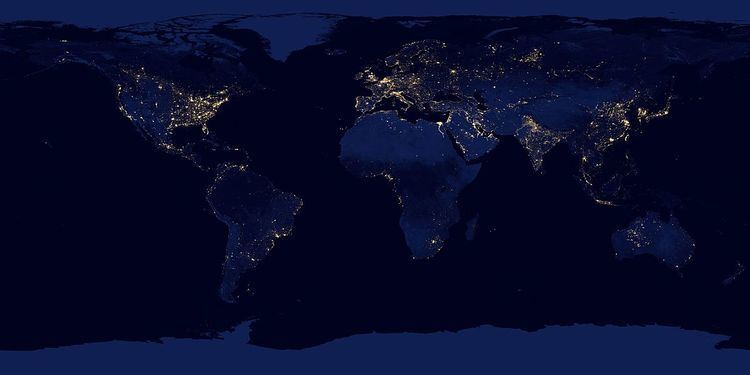 | ||
The Visible Infrared Imaging Radiometer Suite (VIIRS) is a sensor designed and manufactured by the Raytheon Company on board the Suomi National Polar-orbiting Partnership (Suomi NPP) weather satellite. VIIRS is one of five key instruments associated with the Suomi NPP that was launched on October 28, 2011. VIIRS is a whiskbroom scanning radiometer that collects imagery and radiometric measurements of the land, atmosphere, cryosphere, and oceans in the visible and infrared bands of the electromagnetic spectrum.
Contents
VIIRS is capable of generating two data processing streams that result in two different sets of land products. One is produced by NOAA, and provides operational data for use by the National Weather Service. These are known as environmental data records (EDRs). The other stream is from NASA, and is intended to contribute to the larger scientific community. These are known as Earth System Data Records (ESDRs).
Mission overview
VIIRS was launched on board Suomi NPP by a United Launch Alliance Delta II rocket from the Vandenberg Air Force Base at 5:48 am EDT on 28 Oct, 2011. VIIRS was designed to expand upon the data collected by the aging MODIS and AVHRR sensors by collecting radiometric measurements of Earth in the visible and infrared spectra. This data is used to provide insight into the properties and dynamics of different geophysical phenomena, including: aerosol and cloud properties, sea, land and ice surface temperatures, ice motion, fires, and the albedo of Earth. VIIR's main objectives include the monitoring and investigation of changes and properties in vegetation, land cover/use, the hydrologic cycle, and the earth's energy budget over both global and regional scales.This information is useful in furthering our understanding of global climate change. The combination of MODIS, AVHRR, and VIIRS datasets will permit a comprehensive assessment of how climate change has effected the land surface over the past ~20 years.
Specifications
VIIRS has a swath width of 3060km at the satellite's average altitude of 829km. This swath width is able to provide complete coverage of Earth across the day. The VIIRS instrument can collect data in 22 different spectral bands of the electromagnetic spectrum, in the wavelengths between 0.412µm and 12.01µm. The spatial resolution the sensor depends on the band of the electromagnetic spectrum. Out of the 22 different spectral bands the sensor has, 16 are moderate resolution bands (M-bands) which have a spacial resolution of 750m at the Nadir. The other six bands are made up of five imaging resolution bands (I-bands), which have a spatial resolution of 375m at the nadir, and one day/night panchromatic band with a spatial resolution of 750m. VIIRS imaging optics include a 19.1cm Aperture and a 114cm Focal length. The average orbit power for the instrument is 200 watts. In total the instrument weighs 275kg.
